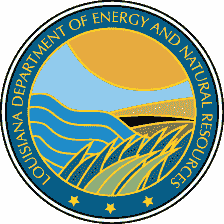Ground Water
Ground Water Resources Commission updated on water use
The Louisiana Ground Water Resources Program staffers reported to the state Ground Water Resources Commission this week that nearly 80 percent of water used for drilling operations in the Haynesville Shale now comes from surface water sources.
A Ground Water Program study of the operations of more than 420 wells drilled from October 2009 through mid-July shows 1.5 billion gallons of surface water has been used in drilling operations in the Haynesville Shale natural gas formation in northwest Louisiana – making up nearly 80 percent of the total water used in those operations.
Ground Water Commission members heard that the efforts of the state Office of Conservation and its Ground Water Resources Program in guiding the industry to alternative water sources and in tracking the water sources used have helped protect the ground water resources in the area.
“We can observe that these companies are cooperating with the state as we seek the balance of meeting the needs of energy production and our environment,” said Lt. Governor Scott Angelle, chairman of the Commission. “We can find a way in Louisiana to develop energy resources without compromising our stewardship responsibilities in protecting our environment.”
The August meeting marks the ninth meeting held by the Commission in the 22 months since Gov. Bobby Jindal appointed Angelle as chairman – state law requires the body to meet twice a year. The Commission has also met in six different venues throughout the state in that time to allow greater access to citizens.
The Commission was updated on the continued progress of the comprehensive statewide water management plan. The contractors working on development of the plan are still on schedule to present a draft report to the Commission in late 2010.
Ground Water Resources staffers also reported to the Commission that the merging of DNR and state Department of Transportation and Development databases on ground water well use, construction and installation has been completed.
The merger of the electronic databases will allow for much greater speed and efficiency in evaluating and managing current use and evaluation of proposed new wells and usage rates for ground water, said Office of Conservation Environmental Division Director Gary Snellgrove.
For the public and those involved in the water supply industry, the new database will mean well locations and other information can be gathered directly through the DNR SONRIS website, cutting time and extra steps for those who need the data.
Gary Hanson, director of LSU-Shreveport’s Red River Watershed Management Institute, said the newly merged database provides not only state-of-the-art technology, but also as system that is easy to learn and use.
“Although the previous DOTD water well database was a vital repository for water well and water data, the new DNR interactive special database is a tremendous tool for water managers, the general public, ground water researchers and educators,” Hanson said. “This will be a great tool for management in the Haynesville Shale play.”
Following legislative action in 2009, DNR’s Office of Conservation worked with DOTD to transfer management of the DOTD Water Well Drillers Licensing and Regulations Program, the Water Well Registration Program and its enforcement program to the Office of Conservation, as part of its environmental division and Ground Water Resources Program. Though much of the ground water responsibility has been centralized to the Office of Conservation as part of a streamlining effort, DOTD continues to provide well inspectors and funding for the program.
“Our colleagues at DOTD did an excellent job of managing their portion of the ground water program before the transfer, and throughout this streamlining effort, have been able and cooperative in making sure we had a smooth transition,” Angelle said.
News Archives »